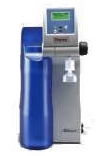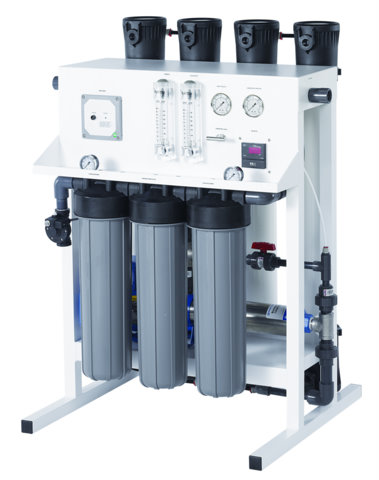|
Celebrating 34 years providing high quality products and advice.
|
| Our Local Time Is 8:28:41 AM. |
| Call us at 818-786-0600. We are here to help! |
 |
We Offer Huge Savings
on Fume Hoods and Enclosures for your laboratory. |
Lab Filter Membrane Properties
Membrane Types
View All Lab Filters
Glass Filter Grades
Cellulose Nitrate
(CN) membrane is the most popular membrane used in analytical and laboratory filtration. CN membrane has excellent wetting properties and gives fastest flow rates with aqueous solutions.
Mixed Cellulose Ester
Membrane provides a more uniform and smoother surface compared to pure nitrocellulose membrane. This membrane is typically used to count or analyze particles contained in liquids or captured from aerosols.
Cellulose Acetate
Membrane is a mixture of cellulose triacetate and diacetate that creates a strong membrane in both lateral and longitudinal directions. In addition, the membrane has a low static charge, a very low aqueous extractability, and good solvent resistance to low molecular weight alcohols.
Regenerated Cellulose (RC)
Regenerated Cellulose is an hydrophilic, solvent resistant, low protein binding membrane. RC membrane is ideal for removing particulates from HPLC samples, prior to injection. This membrane is compatible with all HPLC solvents, and can be utilized for particle removal and de-gassing of these solvents. RC membranes are also compatible with aqueous solutions in the pH range of 3 to 12. Extractables with water are less than 1%. Regenerated Cellulose membranes exhibit low non-specific adsorption, thus they are well suited for filtration of biological samples, where maximum recovery of protein is important. When used with a glass pre-filter in the same housing, this membrane is ideal for filtration of tissue culture media, as well as general biological sample filtration. RC membranes can be sterilized by gamma radiation, autoclaving, ethylene oxide, or dry heat.
Cellulose Esters (MEC)
Cellulose Esters is a very low protein binding membrane that is ideal for aqueous based samples. MEC membranes are an excellent choice when maximum protein recovery in the filtrate is critical. Laboratory studies show that MEC membranes bind less protein than PVDF or Polysulfone membranes. When used with a glass pre-filter in the same housing, these membranes are ideal for filtration of tissue culture media and sensitive biological samples. The pre-filter increases yield.
Polyethersulfone (PES)
Membrane is hydrophilic and low protein binding. No external wetting agents are required, resulting in low extractables. PES membrane generally offers fast flow rate and better chemical resistance than cellulose acetate membranes.
PTFE
Membrane is strong, highly porous, and inert to most chemically aggressive solvents, strong acids, and bases. Chemical and thermal limitations are imposed by the backing material.
View All Lab Filters
Nylon
Membrane is strong, inherently hydrophilic, and compatible with a broad range of aqueous solutions including alcohols and solvents used in HPLC work.
New low extractable Nylon membranes combine the solvent resistance of Nylon with a membrane that exhibits very low extractables. Nylon is commonly used for general laboratory filtration, and filtration of HPLC samples prior to injection. Nylon binds protein, and should not be used when maximum protein recovery is important. Nylon can be sterilized by autoclaving at 120°C, gamma radiation, or ethylene oxide.
Polypropylene (PP)
Polypropylene membrane is a hydrophilic membrane that exhibits a wide range of chemical compatibility to organic solvents. PP membranes are a good choice for filtration of HPLC samples when performing protein analysis by chromatography. In addition to being highly solvent resistant, these membranes are low non-specific adsorbing membranes, which results in maximum protein recovery for critical analysis. PP membranes are also well suited for biological sample filtration.
Glass Media
Glass Media membranes are commonly used as pre filters in many filtration devices. Specialized glass membranes are used for DNA recovery and clean-up
PVDF
PVDF (polyvinylidene difluoride) is a hydrophilic, solvent resistant membrane that exhibits low levels of UV absorbing extractables. PVDF is useful for HPLC sample filtration, as well as general biological filtration. PVDF is considered to be one of the low protein binding membranes.
Teflon® (PTFE)
Teflon® (Polytetrafluoroethylene) is hydrophobic, and chemically resistant to all solvents, acids and bases. PTFE, membrane does not impart any extractables to the filtrate. PTFE is an ideal membrane for transducer protectors, since it blocks water vapor. PTFE is ideal for filtering and de-gassing chromatography solvents.
Chemical Compatibility

View All Lab Filters
|
Images are representative of the products. Images may or may not be of the actual product. If it is important e-mail us for an actual image if available.
* Flat Rate UPS shipping when able to ship via UPS and is in the USA excluding Hawaii and Alaska.
Larger Items may not be able to ship via UPS, in that case freight charges will be quoted seperately.
International shipping will be quoted after the order is placed. You will have the opportunity to cancel before we finalize your order.
Terms and conditions
Credit Application
Privacy
Policy
List All Products
|






